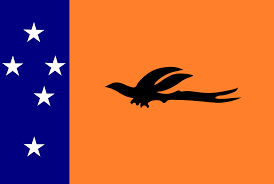It encompasses the main town of Kavieng, which serves as the provincial capital, and the surrounding areas. The district is known for its stunning coastal landscapes, rich marine resources, and vibrant cultural heritage.
The economy of Kavieng District is primarily based on agriculture, fisheries, and tourism. The fertile soil and favorable climate support the cultivation of various cash crops, including cocoa, copra, coffee, and spices. Local farmers engage in subsistence farming as well as commercial production, contributing to the province’s agricultural sector.
The district is surrounded by abundant marine resources, including coral reefs, lagoons, and deep-sea fishing grounds. Fishing is a significant economic activity, providing livelihoods for many coastal communities. Commercial fishing operations, as well as small-scale artisanal fishing, contribute to the local economy and supply seafood to domestic and international markets.
Kavieng District is blessed with pristine beaches, crystal-clear waters, and diverse marine ecosystems. These natural attractions make it a popular destination for tourists, particularly for diving and snorkeling enthusiasts. The district’s waters are home to a variety of marine life, including colorful coral reefs, tropical fish, dolphins, and even occasional sightings of whales. Infrastructure development, particularly in terms of transportation and tourism facilities, is important for further promoting Kavieng District as a tourist destination. Improved road networks, airports, and accommodation options can enhance accessibility and attract more visitors to the district.
In summary, Kavieng District is a picturesque coastal region in New Ireland Province, renowned for its agricultural productivity, abundant fisheries, and scenic beauty. The district’s cultural heritage and natural attractions make it an appealing destination for tourists seeking a combination of cultural experiences and outdoor adventures.
Namatanai District is located in the northeastern part of Papua New Guinea’s New Ireland Province. It encompasses the main town of Namatanai and the surrounding rural areas. The district is characterized by its natural beauty, including pristine beaches, lush rainforests, and rugged mountains.
The economy of Namatanai District is primarily based on agriculture, fisheries, and small-scale mining. The fertile land supports the cultivation of various crops, including cocoa, copra, coffee, and fruits. Agriculture is both a subsistence activity for local communities and a source of income through commercial production. The district’s coastal location also provides opportunities for fishing and the harvesting of marine resources.
The district is home to stunning natural attractions, including beautiful beaches and coral reefs. These pristine marine environments attract tourists and diving enthusiasts who come to explore the underwater wonders of the region. Inland, the district is adorned with lush rainforests, cascading waterfalls, and majestic mountains, offering opportunities for hiking, trekking, and wildlife spotting. Infrastructure development, particularly in terms of transportation and tourism facilities, is essential for further unlocking the tourism potential of Namatanai District. Improved road networks, airports, and accommodation options can enhance accessibility and attract more visitors to explore the district’s natural and cultural treasures.
Overall, Namatanai District in New Ireland Province offers a unique blend of natural beauty, cultural diversity, and traditional practices. The district’s agricultural resources, coastal waters, and stunning landscapes contribute to its economic potential and make it an appealing destination for tourists seeking both adventure and cultural immersion.
